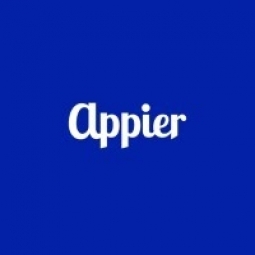Technology Category
- Sensors - GPS
Applicable Industries
- E-Commerce
- Retail
Applicable Functions
- Logistics & Transportation
- Procurement
Use Cases
- Last Mile Delivery
- Retail Store Automation
Services
- Cloud Planning, Design & Implementation Services
About The Customer
99 Ranch is the leading Asian supermarket chain in the U.S., established in 1984. The brand was founded to fill a gap in the market of Asian grocery staples, including vegetables, fruits, spices, and other condiments. It has since expanded from its first location in California to 54 stores across 10 states. To serve a growing demand across the US, 99 Ranch launched an online store as well as a mobile app for grocery delivery. The company has a size of between 6000-7000 employees.
The Challenge
99 Ranch, the leading Asian supermarket chain in the U.S., was facing challenges in optimizing its online store’s performance in the highly competitive online grocery market. The company had launched its online shop in 2019, allowing customers to do their grocery shopping at their convenience. However, like most e-commerce websites, the challenge was getting visitors to add items to their carts and complete their checkout. The company was also grappling with the issue of how to effectively use coupons to incentivize shopping. The conventional coupon delivery systems were not yielding the desired results, as they were not targeted and were being presented to all shoppers, including those who would have made purchases regardless.
The Solution
To address these challenges, 99 Ranch partnered with Appier to leverage the AI-powered conversion optimization cloud, AiDeal. The solution was designed to adopt a more targeted approach to coupon marketing. Unlike traditional coupon delivery systems, AiDeal only presents coupons to hesitant shoppers, thereby saving on the coupon budget and maximizing revenue. The company worked closely with Appier’s campaign management team to devise a strategy to incentivize hesitant shoppers to shop more and check out. The strategy that proved successful was a time-limited 20% off discount for orders that were USD120 or more. The incentive of a 20% discount coupled with the urgency of a 30-minute time limit prompted shoppers to actually check out with more in their shopping carts.
Operational Impact
Quantitative Benefit

Case Study missing?
Start adding your own!
Register with your work email and create a new case study profile for your business.
Related Case Studies.

Case Study
Improving Production Line Efficiency with Ethernet Micro RTU Controller
Moxa was asked to provide a connectivity solution for one of the world's leading cosmetics companies. This multinational corporation, with retail presence in 130 countries, 23 global braches, and over 66,000 employees, sought to improve the efficiency of their production process by migrating from manual monitoring to an automatic productivity monitoring system. The production line was being monitored by ABB Real-TPI, a factory information system that offers data collection and analysis to improve plant efficiency. Due to software limitations, the customer needed an OPC server and a corresponding I/O solution to collect data from additional sensor devices for the Real-TPI system. The goal is to enable the factory information system to more thoroughly collect data from every corner of the production line. This will improve its ability to measure Overall Equipment Effectiveness (OEE) and translate into increased production efficiencies. System Requirements • Instant status updates while still consuming minimal bandwidth to relieve strain on limited factory networks • Interoperable with ABB Real-TPI • Small form factor appropriate for deployment where space is scarce • Remote software management and configuration to simplify operations

Case Study
Digital Retail Security Solutions
Sennco wanted to help its retail customers increase sales and profits by developing an innovative alarm system as opposed to conventional connected alarms that are permanently tethered to display products. These traditional security systems were cumbersome and intrusive to the customer shopping experience. Additionally, they provided no useful data or analytics.

Case Study
How Sirqul’s IoT Platform is Crafting Carrefour’s New In-Store Experiences
Carrefour Taiwan’s goal is to be completely digital by end of 2018. Out-dated manual methods for analysis and assumptions limited Carrefour’s ability to change the customer experience and were void of real-time decision-making capabilities. Rather than relying solely on sales data, assumptions, and disparate systems, Carrefour Taiwan’s CEO led an initiative to find a connected IoT solution that could give the team the ability to make real-time changes and more informed decisions. Prior to implementing, Carrefour struggled to address their conversion rates and did not have the proper insights into the customer decision-making process nor how to make an immediate impact without losing customer confidence.

Case Study
Ensures Cold Milk in Your Supermarket
As of 2014, AK-Centralen has over 1,500 Danish supermarkets equipped, and utilizes 16 operators, and is open 24 hours a day, 365 days a year. AK-Centralen needed the ability to monitor the cooling alarms from around the country, 24 hours a day, 365 days a year. Each and every time the door to a milk cooler or a freezer does not close properly, an alarm goes off on a computer screen in a control building in southwestern Odense. This type of alarm will go off approximately 140,000 times per year, equating to roughly 400 alarms in a 24-hour period. Should an alarm go off, then there is only a limited amount of time to act before dairy products or frozen pizza must be disposed of, and this type of waste can quickly start to cost a supermarket a great deal of money.

Case Study
Supermarket Energy Savings
The client had previously deployed a one-meter-per-store monitoring program. Given the manner in which energy consumption changes with external temperature, hour of the day, day of week and month of year, a single meter solution lacked the ability to detect the difference between a true problem and a changing store environment. Most importantly, a single meter solution could never identify root cause of energy consumption changes. This approach never reduced the number of truck-rolls or man-hours required to find and resolve issues.








